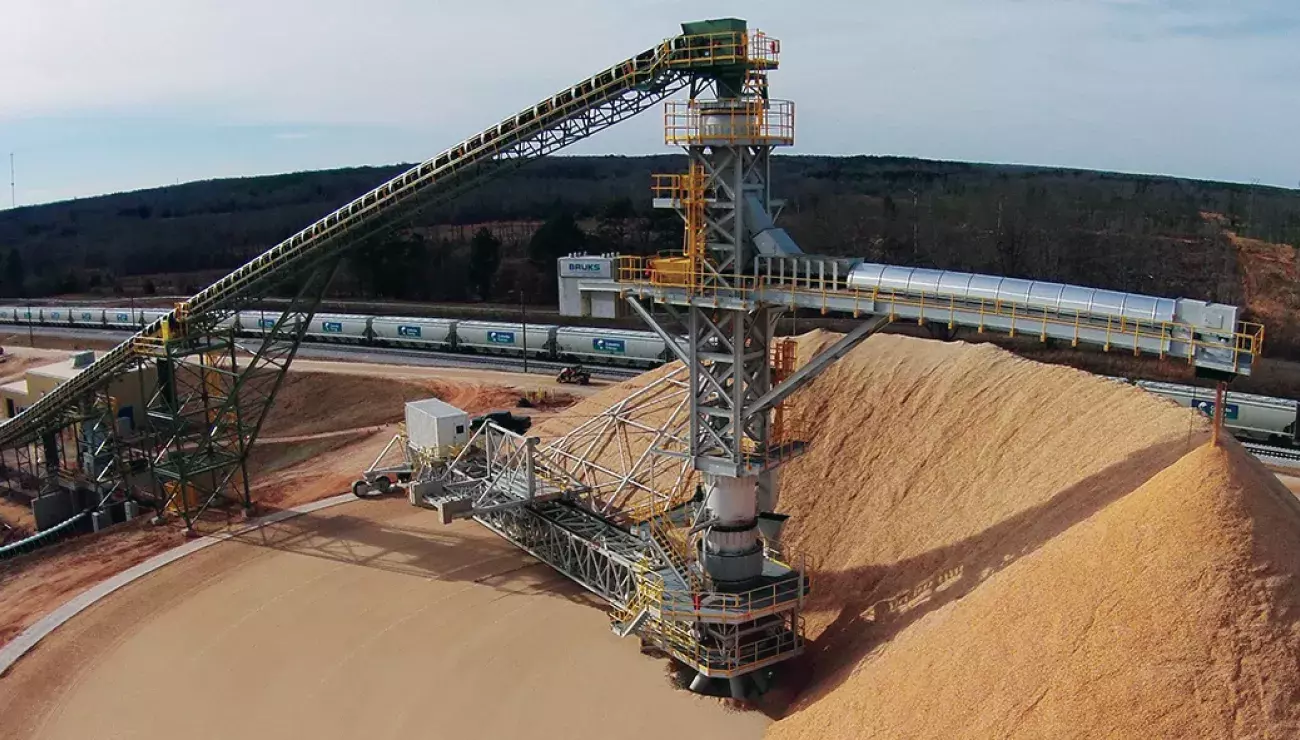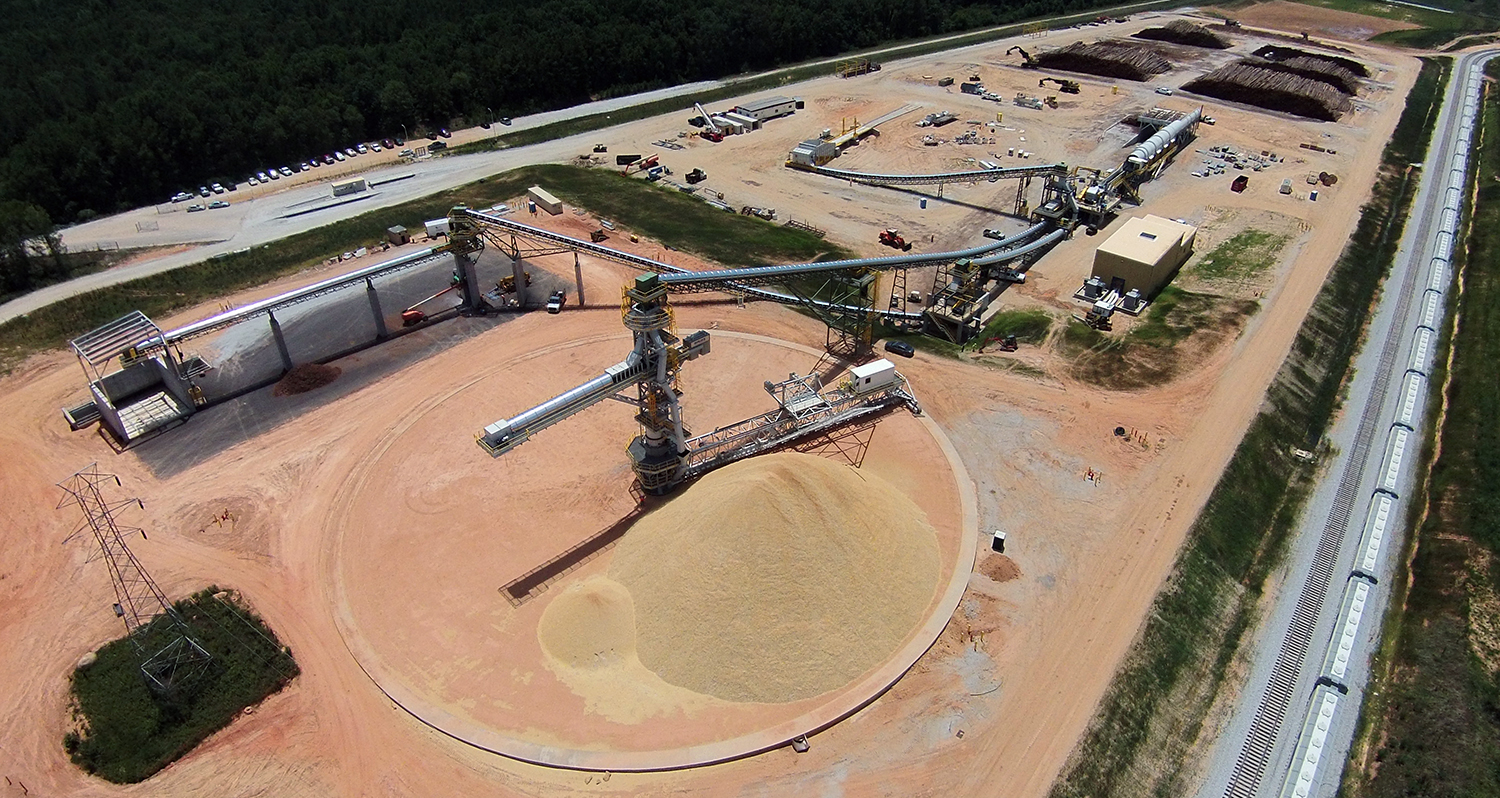
Think outside the box for efficiency and environmental gains
17 Mar 2021The United States is home to a number of large-scale manufacturers of containerboard and corrugated packaging. In 2019, one of the largest, running a network of several containerboard mills and converting operations, produced about 4.2 million metric tons of containerboard and shipped about 5,520 million square meters (59.4 billion square feet) of corrugated products.
Over a number of years, the undisclosed operator has repeatedly turned to Bruks Siwertell for its wood-processing and handling expertise. Last year, Bruks Siwertell’s new air-cushioned conveyor technology, The Belt ConveyorTM, made its debut at its highest-volume mill, and this year, the company also required a specialist approach at its mill based in the Pacific northwest.
This mill has two containerboard machines producing semi-chemical corrugating medium and kraft linerboard. To improve efficiencies and reduce environmental impact and material degradation, Bruks Siwertell was contracted to automate its woodyard.
Reduced operating costs
“The mill currently operates with manual equipment such as dozers,” explains Daniel Pace, Sales Manager, Bruks Siwertell. “This is very costly and degrades the material during handling. By automating the woodyard, operating costs are drastically reduced.”
Bruks Siwertell’s fully automated woodyard will comprise: two Bruks back-on truck dumpers, with covered receiving hoppers, which can each process up to six bulk trucks an hour; two circular blending bed stacker reclaimers (CBBSRs), one for handling wood chips, with a storage capacity of 35,000 tons and the other for sawdust, with a storage capacity of 20,000 tons; a sawdust metering tower; and a complete conveyor system featuring Bruks air-cushion conveying technology, The Belt Conveyor.
“By choosing our blending bed stacker reclaimer, the operator will have a true first-in-first-out management of its wood chip and sawdust storage, which optimizes the blend of chip sizing across the pile cross-section,” notes Pace.

Innovative collaboration
“We also had to overcome some significant engineering considerations before finalizing the equipment solution,” he continues. “These predominantly stemmed from the location of the mill, close to the river. This proximity meant that the water table, relative to the ground level where the stacker reclaimers needed to be positioned, was a challenge. The operator's preference of the blending bed stacker reclaimer systems and their 360-degree operation requires below-ground tunnels for the reclaim conveyor and emergency access.
“Typical foundation designs would have been too costly. However, through innovative collaboration between Bruks Siwertell’s mechanical and civil engineers, a solution was devised that met the customer’s operational requirements as well as the project budget,” Pace says.
Preventing dust emissions
“Operators not only want the highest efficiencies for their mills, they also often heavily focus on the environment,” adds Pace. “For this particular operator, all its mills are certified under the US Sustainable Forestry Initiative.”
Raw materials for the mill, wood chips and sawdust, are inherently dusty, so enclosing receiving and handling systems, where possible, reduces any fugitive dust emissions.
The first dust-reduction strategy is with the truck-unloading systems. As the bulk trucks are raised, the low-profile, end-pivot design of the Bruks truck dumper ensures that the truck unloads its cargo at a low elevation, approximately 2.5m above the ground, and directly into the back end of the hopper. This keeps the impact of the free-flowing material very low and results in minimal dust emissions. This is further managed with the covered receiving hoppers, which are also fitted with dust collectors, which capture fugitive dust during the initial emptying of the trucks.
The Belt Conveyor technology reduces any dust or spillage even further. The conveying system is totally contained within a pressurized air-enclosure system underneath the belt. This eliminates the need for idlers and ensures a very smooth material conveying profile, which prevents any material degradation and further dust creation.
Expert, turn-key deliveries
As the new woodyard will be constructed in the middle of the mill’s current one, with operations continuing, the project will be completed in two phases. The first phase will involve the installation of the wood chip handling system, and is planned for completion by the end of 2021. The second phase, installing the sawdust handling system, is scheduled to be complete towards the end of 2022.
Bruks Siwertell will be responsible for the mechanical installation, as well as the foundation design and installation of all its delivered equipment.
“The operator knows what it can expect from our equipment and project involvement. Our proven track record for turn-key deliveries and our leading supplier status for stacker reclaimers in North America, builds on this confidence. It also knows that we have the ability to support the project from our Americas office in Alpharetta, Georgia, providing the company with a 24/7 support network throughout the project and for many years to come,” concludes Pace.
For more information, please send an email to sales.atlanta@bruks-siwertell.com
 Bruks-Siwertell
Bruks-Siwertell